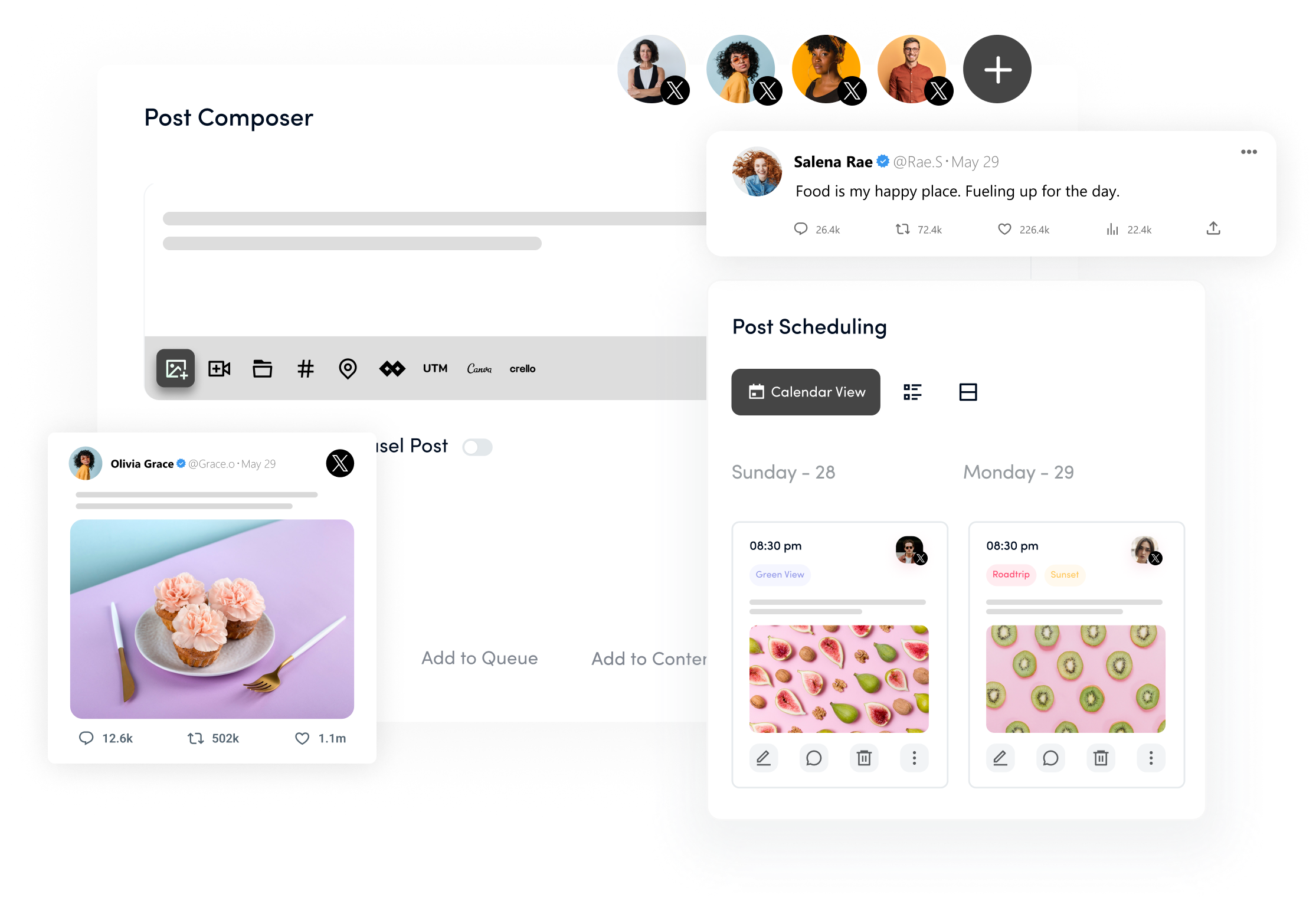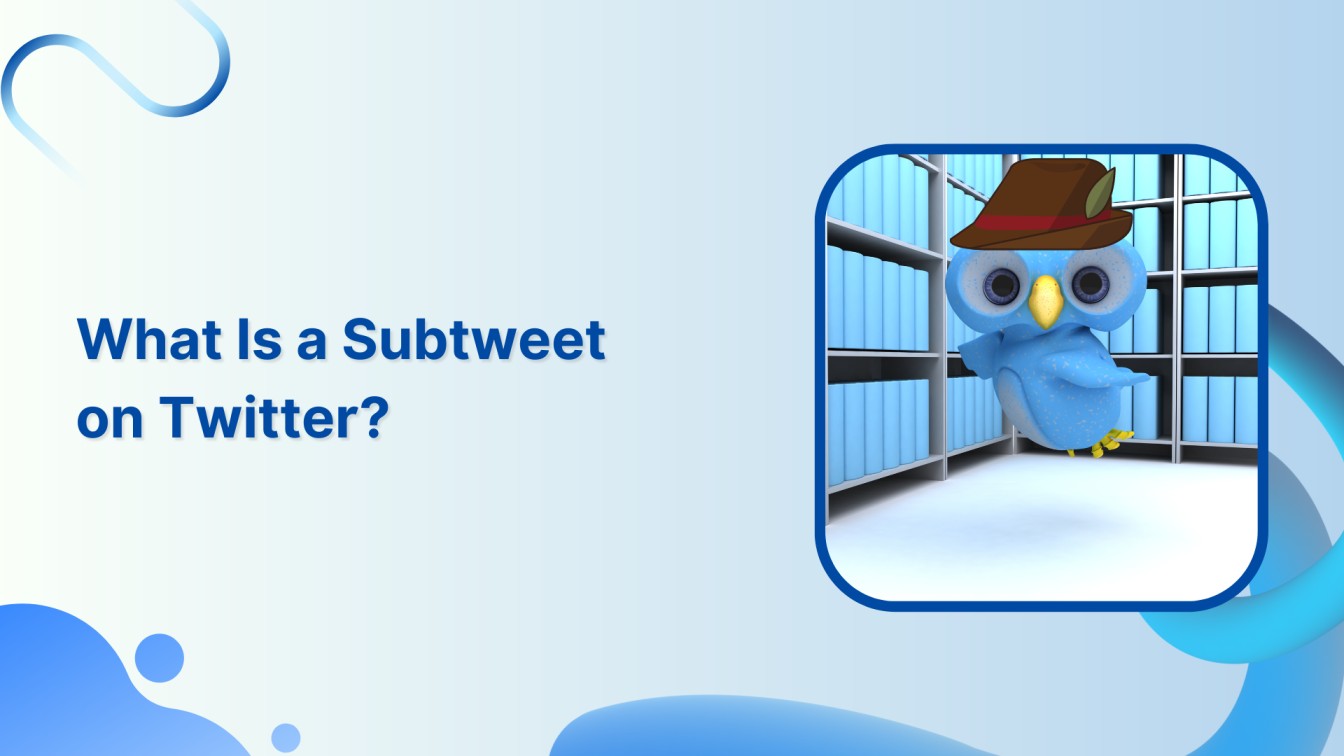A subtweet is a tweet that indirectly references or talks about a specific person or group without directly mentioning their name or handle. The intention behind a subtweet is often to express thoughts, opinions, or feelings about someone or something without directly confronting them or starting a public argument. Still wondering what is a subtweet on Twitter?
Related Read: How to Hide Likes on Twitter?

Examples of Subtweets
A subtweet feels like an abstract concept. Here are a few examples for a clear idea.
Example#1
@Mermaidwrites is telling highlights of her life without mentioning her friend’s name.
Sang a concert for 13k ppl once. Highlight of my life?
No
The highlight of my life was the day I met my best friend. He’s the only thing that means anything to me. #subtweet
— 🧜♀️ Writes (@mermaidwrites) July 16, 2023
Example#2
@Zhusu is also sub-tweeting aggressively.
Some crazy people on Twitter tonight. #subtweet
— Zhu Su (Positive Doom Baller) (@ivrespecter) July 7, 2023
Why Do People Subtweet?
People subtweet for various reasons, and the motivations behind subtweeting can differ from one individual to another. Some common reasons why people engage in subtweeting include:
Venting frustrations: Subtweeting allows individuals to express their frustrations, annoyance, or anger about a person or situation without directly confronting the involved parties. It can be a way for people to release emotions without engaging in direct confrontation.
https://twitter.com/BigtenBenn/status/1678123454057582592?s=20
Avoiding conflict: Subtweeting offers a passive-aggressive approach to communication. People may feel uncomfortable or hesitant about addressing an issue directly with the person involved, so they opt for subtweeting as a means to communicate indirectly.
X (Twitter) Marketing Schedule perfectly crafted tweets and manage your X (Twitter) content with a unified content calendar.
Seeking validation or sympathy: Subtweets can be a way for people to seek validation or sympathy from their followers. By sharing cryptic messages, they may hope to receive support or agreement from others without explicitly asking for it.
Attention-seeking: Some individuals might subtweet to grab attention or generate reactions from their followers. Cryptic tweets can pique curiosity and lead to discussions, drawing more attention to the individual’s account.
https://twitter.com/JenDeJournett/status/1679888132508987392?s=20
Engaging in gossip or drama: Subtweeting can perpetuate gossip or drama, as followers may speculate about the subject of the tweet, leading to discussions and debates about the individuals involved.
Reminds me of someone I work with… 😜 #Subtweet https://t.co/QdIXTK0M4u
— Helena 🌵☀️ (@Girlw0ndr) February 11, 2023
Fear of confrontation: Subtweeting can be a way for individuals to express their thoughts or criticisms about someone or something they fear confronting directly. It provides a level of distance and perceived safety.
Exercising creativity or wit: For some people, crafting clever or cryptic tweets can be a form of self-expression, allowing them to showcase their creativity or sense of humor.
It is important to be mindful of the potential negative consequences of subtweeting. Subtweets can create misunderstandings, escalate conflicts, and damage relationships. Open and direct communication is often a healthier and more effective way to address issues and resolve conflicts.
FAQs
How do you know if someone is Subtweeting you?
If your feed fills with vague threats, strange rants, and aggressive meltdowns about your previous tweet context, you will know people are subtweeting you.
How does a Subtweet work?
A subtweet is an individual response to someone else’s tweet, deliberately omitting any direct reference to the original person or their tweet.
